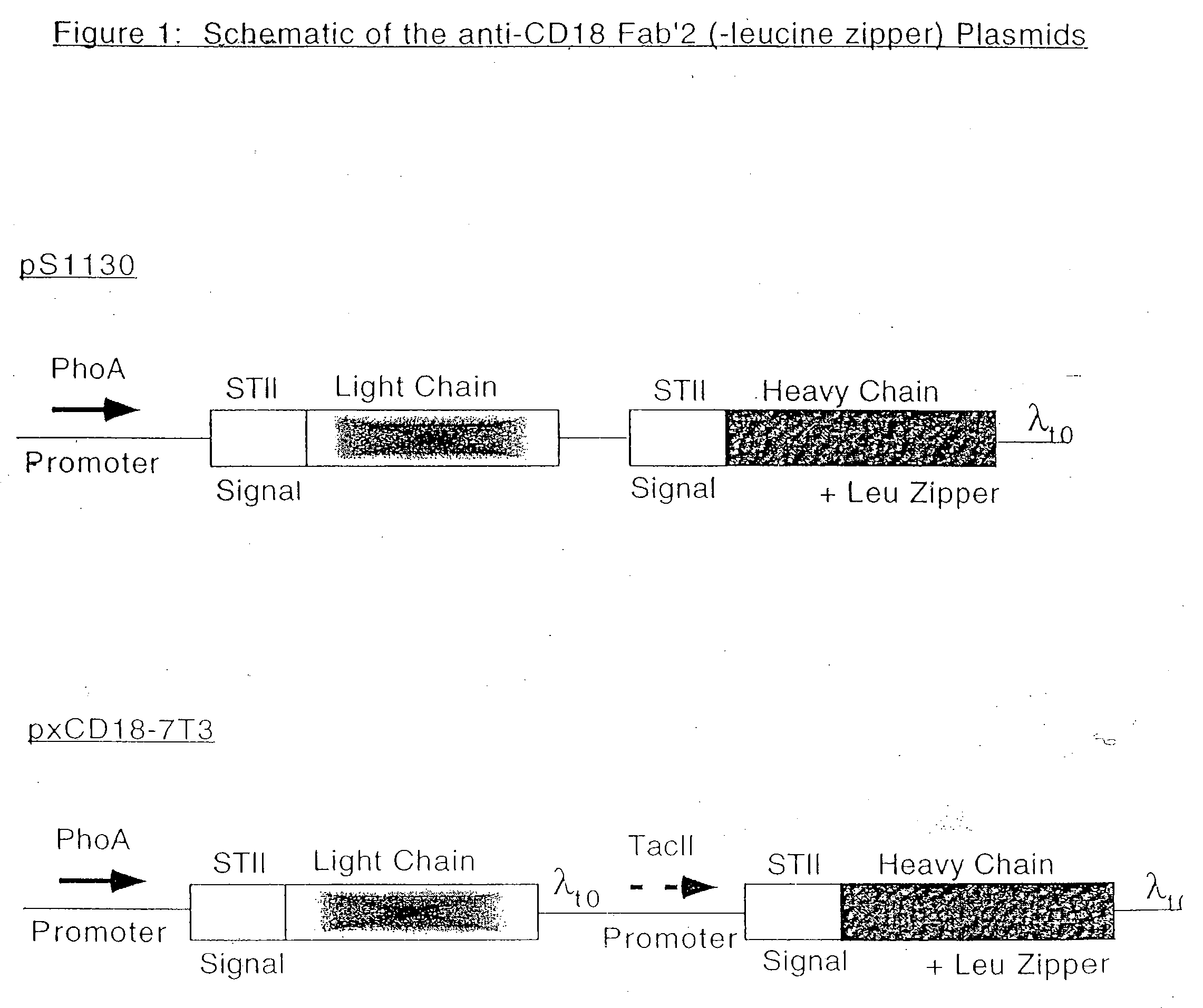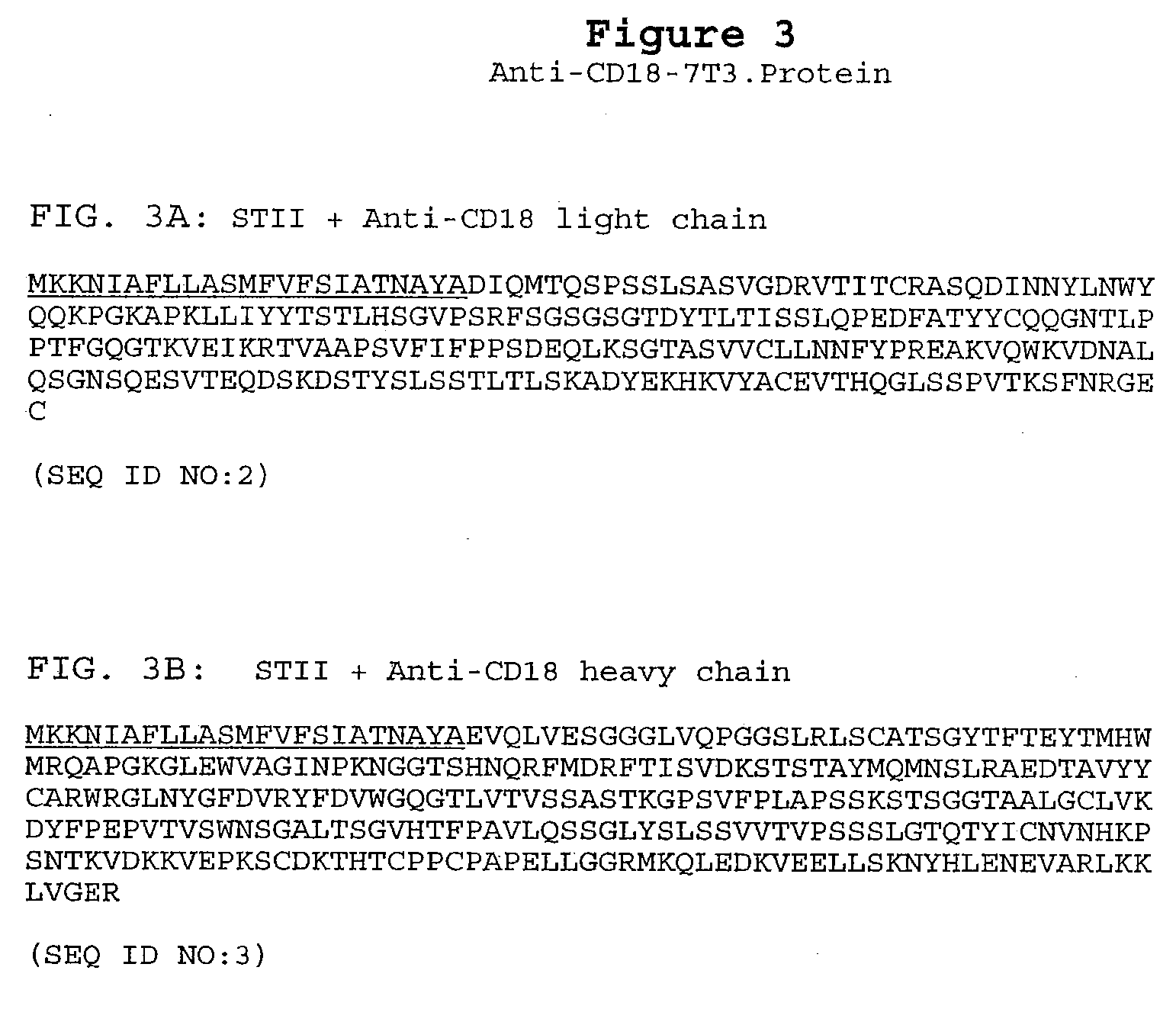Purification of polypeptides
a polypeptide and purification technology, applied in the field of purification of polypeptides of interest, can solve the problems of difficult removal of subcellular fragments, inactivation of proteins, and formidable challenges of human therapeutic use, and achieve the effects of reducing the volume of chromatographic media or resin, improving purity, and reducing the scale needed
- Summary
- Abstract
- Description
- Claims
- Application Information
AI Technical Summary
Benefits of technology
Problems solved by technology
Method used
Image
Examples
example 1
Materials and Methods
A. Plasmids, Transformation, Fermentation
[0170] 1. Production of rhuFab′2 (xCD18)
[0171] a. Plasmid Construction
[0172] The control plasmid, pS 1130, was designed for the dicistronic expression of anti-CD18 F(ab′)2 and it was based on the vector described by Carter et al, Bio / Technology, 10: 163-167 (1992). This design places transcription of the genes for both the light-chain and the heavy-chain fragments with a C-terminal leucine zipper under the control of a single phoA promoter. Transcription ends with a λt0 transcriptional terminator located downstream of the coding sequence for the heavy-chain-leucine zipper (Scholtissek and Grosse, Nucleic Acids Res., 15(7): 3185 (1987)). The heat-stable enterotokin II signal sequence (STII) precedes the coding sequence for each chain and directs the secretion of the polypeptide into the periplasm (Lee et al, Infect. Immun., 42: 264-268 (1983); Picken et al., Infect. Immun., 42: 269-275 (1983)). Leucine zipper was atta...
PUM
| Property | Measurement | Unit |
|---|---|---|
| temperature | aaaaa | aaaaa |
| temperature | aaaaa | aaaaa |
| temperature | aaaaa | aaaaa |
Abstract
Description
Claims
Application Information
 Login to View More
Login to View More - R&D
- Intellectual Property
- Life Sciences
- Materials
- Tech Scout
- Unparalleled Data Quality
- Higher Quality Content
- 60% Fewer Hallucinations
Browse by: Latest US Patents, China's latest patents, Technical Efficacy Thesaurus, Application Domain, Technology Topic, Popular Technical Reports.
© 2025 PatSnap. All rights reserved.Legal|Privacy policy|Modern Slavery Act Transparency Statement|Sitemap|About US| Contact US: help@patsnap.com



